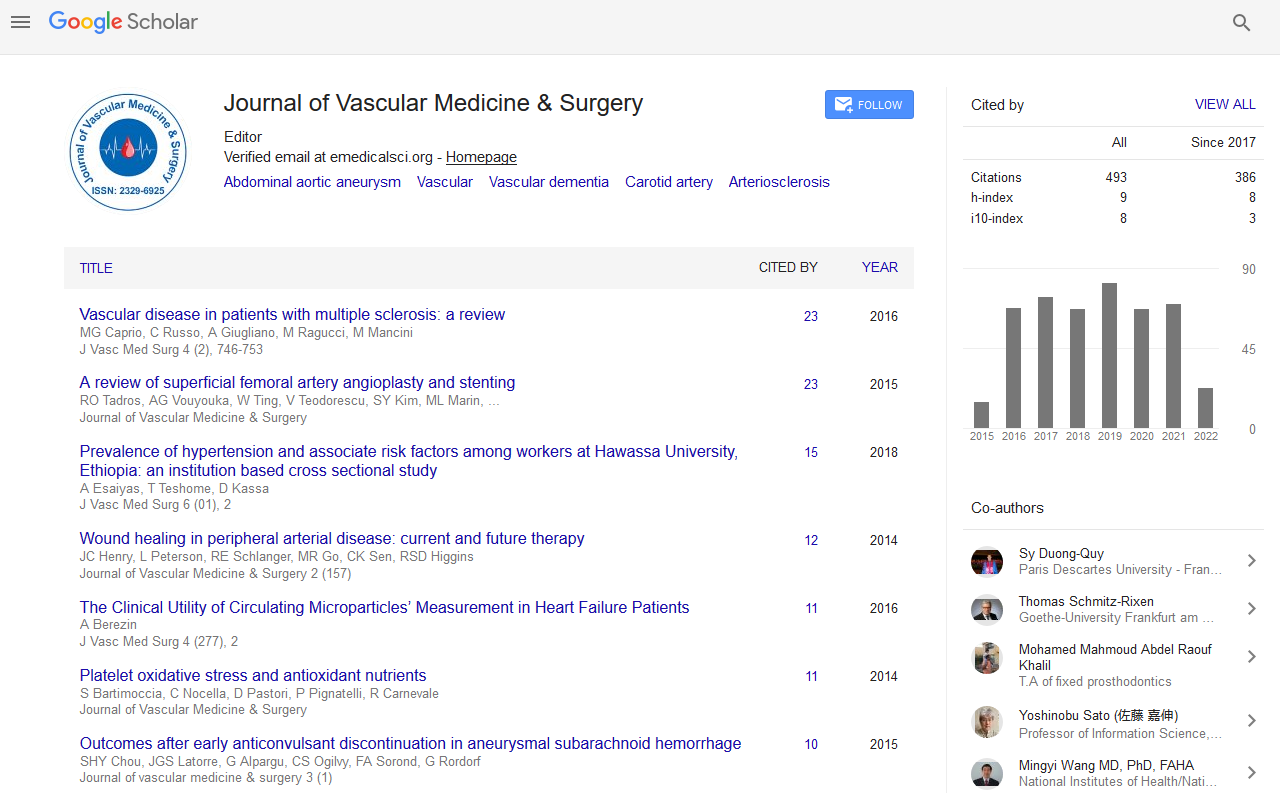Indexed In
- Open J Gate
- Academic Keys
- RefSeek
- Hamdard University
- EBSCO A-Z
- OCLC- WorldCat
- Publons
- Euro Pub
- Google Scholar
Useful Links
Share This Page
Journal Flyer

Open Access Journals
- Agri and Aquaculture
- Biochemistry
- Bioinformatics & Systems Biology
- Business & Management
- Chemistry
- Clinical Sciences
- Engineering
- Food & Nutrition
- General Science
- Genetics & Molecular Biology
- Immunology & Microbiology
- Medical Sciences
- Neuroscience & Psychology
- Nursing & Health Care
- Pharmaceutical Sciences
Abstract
Risk Factors Associated with Tunneled Hemodialysis Catheter Use at the Start of Dialysis in Patients Referred for Early Arteriovenous Fistula placement
Dominic N Facciponte* and Michael J Costanza
Objectives: We reviewed a consecutive series of patients who had arteriovenous fistula (AVF) placement in advance of starting hemodialysis and sought to determine what factors were associated with failure of the AVF to be ready for use which required patients to start dialysis with a tunneled dialysis catheter (TDC)?
Methods: We analyzed all patients who had an AVF placed at our institution from 2013-2018 using data from the Vascular Quality Initiative database and retrospective chart review. The primary study group included patients who had an AVF placed in advance of needing hemodialysis. Patients were categorized as “Success”: AVF placement with hemodialysis initiated using the AVF or “Failure”: AVF placement with hemodialysis initiated using a TDC.
Results: Of the 46 patients reviewed 26 (56.5%) were classified as “Failure.” Pre-operative factors associated with failure included: uremia (5% of success group, vs. 26.9% of failure group; p=0.031), uremic males (37.5% of uremic male patients failed vs. 0% of uremic females p=0.007), history of coronary artery disease among males (success, 8.33% vs. fail, 50%, p=0.04), and history of percutaneous coronary intervention among males (fail male, 25% vs. fail female, 0%; p=0.030).
Conclusion: In our series of patients referred for AVF placement prior to starting dialysis we noted an unexpectedly high rate of hemodialysis initiation with a TDC. This study suggests that patient related factors such as uremia and a history of coronary artery disease or intervention may be associated with failure of the AVF to be ready for hemodialysis. Further work building from findings in this study may help with patient selection decisions to minimize the need to initiate hemodialysis with a TDC.
Published Date: 2021-05-04; Received Date: 2021-04-13


